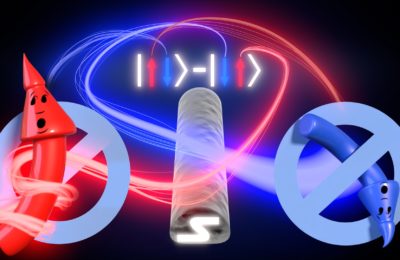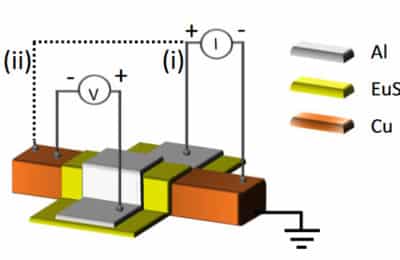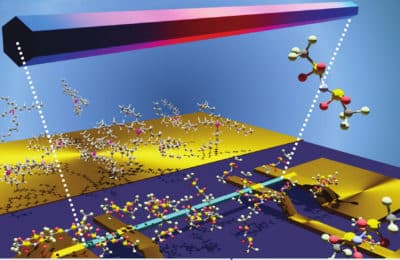Researchers at the University of Basel and Cnr Nnano in Pisa have demonstrated a new route for semiconductor spintronics that can filter single electrons according to their spins in quantum electronic devices. They used ‘nanomagnets’ to individually spin polarize electron states in semiconductor quantum dots. By placing two such “artificial magnetic atoms” in series they demonstrate a switching of the electrical current based on the orientation of the nanomagnets. These results, published in Communication Physics by Arunav Bordoloi, Christian Schönenberger, Andreas Baumgartner from the University of Basel and Valentina Zannier, Lucia Sorba from Cnr Nano, open up new possibilities to exploit the spin degree of freedom in a large variety of quantum systems.
It has been a long standing goal in electronics to use the electron spin instead of the charge, with a wide range of potential applications in information storage and processing. It is also expected that spin based experiments should yield new information on fundamental physical phenomena, for example in superconducting electronic devices. However, all these ideas require very efficient injection or detection of electron spins, which was hampered by many technical and fundamental obstacles.
The team of physicists now present a proof of principle experiment for a unique technique to do spintronics in semiconductor devices. They use ‘nanomagnets’ to create a local magnetic stray field across a small semiconducting island called quantum dot. This field splits the dot spin states in energy, which then can be accesses individually. Since the magnetic field of the nanomagnet can be oriented by an external field, this effect can be controlled by the experimentalist. The experiment consists of placing two such quantum dot elements one after the other. By independently tuning each of the nanomagnets, the researchers found that a current can only flow if both dots allow the same spin species to pass.
Arunav Bordoloi, the PhD student working on this project, found that this method produced a spin polarization close to the theoretical maximum, and that it is fully electrically tunable. “This technique provides us with an efficient, easily controllable knob to choose whether a single electron in a given spin state is allowed to enter or leave a quantum system with an efficiency far greater than conventional spin valves”, he says.
In addition to a large polarization and the electrical tunability, the researchers also demonstrate that the stray magnetic fields are localized to specific locations of the nanowire. “This makes our technique compatible with other materials and device types, for example with superconducting elements”, says Dr. Andreas Baumgartner, who supervises the project. This new route to do spintronics is now expected to render direct spin correlation and spin entanglement measurements feasible, and to shed new light on many old and new physical phenomena.
Bordoloi, A., Zannier, V., Sorba, L. et al. A double quantum dot spin valve. Commun Phys 3, 135 (2020). https://doi.org/10.1038/s42005-020-00405-2
[Image: illustration of a double quantum dot spin valve. Unpolarized electrons enter a first q-dot which acts as a spin polarizer by backscattering one species. The second q-dot acts as an analyser. Only one spin species is transmitted through both dots]



